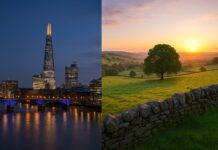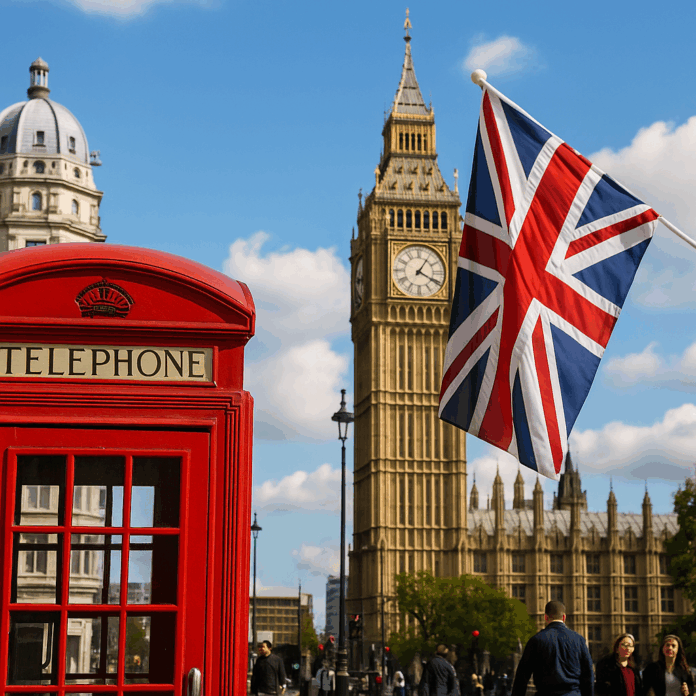London dazzles newcomers with its history, culture, modern energy, and endless sights. Yet even the most prepared travellers often fall into avoidable traps that waste time, drain budgets, and dilute the experience. Before you go, explore the common mistakes first-time visitors make—and learn exactly how to avoid them so your London trip becomes smooth, enriching, and unforgettable.
Introduction
London has a magnetic pull that captures travellers from around the world. A city where medieval alleyways sit beside futuristic towers, where centuries-old traditions blend with global culture, and where every borough tells a different story. But with this diversity comes complexity. It is incredibly easy for first-time visitors to become overwhelmed by the scale, the crowds, the transport system, or the sheer volume of “must-see” attractions.
Many travellers arrive with unrealistic itineraries, misconceptions about distances, and assumptions shaped by movies rather than practical experience. London is one of the most rewarding cities on the planet—but only if you navigate it wisely. Understanding the most common mistakes ensures you spend less time stressing and more time enjoying the city’s vibrant neighbourhoods, hidden nooks, museums, markets, parks, and iconic landmarks.
This guide offers a comprehensive, in-depth look at the nine mistakes new visitors most often make. Each section includes a detailed explanation of why the mistake is so common, how it impacts your trip, and effective steps to avoid it. With the right approach, you can explore London with confidence, clarity, and curiosity.
1. Trying to See All of London in One Trip
Why It Happens
London is enormous—far larger and more layered than most first-time visitors realise. Dozens of attractions are internationally famous. Travellers feel the pressure to tick them all off: Buckingham Palace, Big Ben, the Tower of London, the Natural History Museum, Covent Garden, Notting Hill, Shoreditch, Camden Market, Tate Modern, Hyde Park, the British Museum, and more. The list never ends.
This creates a dangerous illusion that “everything is close together,” when in reality, London sprawls across more than 1,500 square kilometres, with traffic and crowds further slowing travel times.
How This Mistake Ruins a Trip
Trying to do everything leads to exhaustion, rushed visits, and superficial experiences. You spend more time on the Tube than you do enjoying the city. Instead of discovering London’s charm, you race from one landmark to the next.
How to Avoid It
Accept that London cannot be “completed.” Even lifelong residents never see it all. Choose a few meaningful highlights and mix them with slower explorations—neighbourhood walks, cafés, parks, or riverfront strolls. The best London trips allow room for spontaneity.
2. Misunderstanding the London Underground and Transport Zones
Why It Happens
London’s Underground map is iconic but often misunderstood. The colour-coded lines make travel seem simple, but the network is HUGE and spread across multiple fare zones. First-timers often assume every journey costs the same or that travelling via any line is equally fast.
The Consequences
Visitors frequently waste money by not understanding Oyster cards, daily caps, peak fares, or the difference between Zones 1–2 and further-out areas like Zone 6. Some travellers also underestimate walking distances between connecting stations, leading to unnecessary transfers.
How to Avoid It
Use a contactless card or Oyster for automatic daily caps. Stick mainly to Zones 1–2 unless you have a specific reason to go further. Use Google Maps or Citymapper for real-time travel options, including buses, which offer scenic routes with fewer stairs and more comfort.
3. Only Visiting the Most Touristy Areas
Why It Happens
Guidebooks and social media naturally highlight famous icons. As a result, newcomers often stay within tourist-heavy pockets: Leicester Square, Piccadilly Circus, Oxford Street, and Westminster. While these areas are important, they don’t represent the full richness of London life.
The Problem
You end up surrounded by crowds, paying inflated prices, eating average food, and seeing a tiny, commercial slice of a city brimming with diverse neighbourhoods.
How to Avoid It
Balance iconic attractions with explorations of other areas:
- Hampstead for village charm
- Greenwich for maritime history
- Brixton for culture and food
- Richmond for river views
- Walthamstow for creativity
- Marylebone for elegance
- Dulwich for a peaceful London life
London becomes unforgettable when you wander beyond the obvious.
4. Underestimating the Weather
Why It Happens
Films and stereotypes exaggerate London’s rain. Visitors either expect constant storms or pack as if it will be mild and dry. The reality is much more unpredictable: London’s weather can shift from sunshine to drizzle to wind in a single afternoon.
The Downside
Travellers without layers or weather-appropriate clothing struggle on day trips, queue uncomfortably outside attractions, and often cancel plans unnecessarily.
How to Avoid It
Pack light layers, a compact umbrella, and comfortable waterproof shoes. Instead of planning your entire itinerary around the forecast, organise one flexible day where indoor and outdoor options can be swapped depending on conditions.
5. Paying Full Price for Attractions
Why It Happens
Visitors assume London is expensive—and it can be—but many travellers overspend simply because they are unaware of discount passes, free attractions, or alternative pricing structures.
How This Affects Visitors
They pay full price for the London Eye, Tower of London, river cruises, and West End shows when cheaper options were available. They may also skip paid attractions entirely due to cost misconceptions.
How to Avoid It
London has dozens of world-class museums that are completely free, including the British Museum, Tate Modern, the V&A, and the Natural History Museum. For paid attractions, book online in advance, consider combination tickets, and explore free walking tours or city passes that suit your itinerary.
6. Eating in Tourist Traps
Why It Happens
London’s busiest streets are filled with restaurants that rely on high footfall, not quality. First-time visitors naturally gravitate toward convenience, especially after long walks or late-night sightseeing.
The Result
You pay more for meals that do not reflect London’s incredible food scene. Visitors often leave thinking London food is bland or overpriced—simply because they ate in the wrong places.
How to Avoid It
Explore eateries slightly off the main drag. London’s neighbourhoods offer outstanding food:
- Soho for international dining
- Southbank for riverside restaurants
- Borough Market for artisan produce
- Chinatown for authentic flavours
- Battersea for stylish modern venues
- King’s Cross for creative culinary concepts
- Hackney for innovative menus
Avoid restaurants with picture menus, aggressive promoters, or locations immediately beside major attractions.
7. Misjudging Distances and Walking Times
Why It Happens
London’s map can be deceiving. Attractions that appear close often involve long walks, crowds, staircases, and winding streets. First-timers often expect the city centre to resemble compact European capitals.
How This Causes Problems
Travellers book back-to-back activities with no time buffer, miss reservations, or simply exhaust themselves by trying to walk everywhere.
How to Avoid It
Plan realistically. For example, Trafalgar Square to the Tower of London is not a short walk. Use digital maps, check actual distances, and allow more time than you think for travel during peak hours.
8. Ignoring Free Experiences That Locals Love
Why It Happens
New visitors are often unaware of London’s free cultural and outdoor offerings. They focus on paid attractions and miss some of the city’s most memorable experiences.
Examples of Free Highlights
- Hyde Park’s lakes and gardens
- The Sky Garden’s breathtaking views
- Street performances in Covent Garden
- Changing of the Guard at Buckingham Palace
- Walks along the Southbank
- The colourful streets of Notting Hill
- The scenic journey across the Millennium Bridge
- The Harry Potter-like atmosphere of Leadenhall Market
Why This Matters
These moments add texture, atmosphere, and authenticity to your trip—often more than paid attractions do.
9. Not Understanding London’s Cultural Etiquette
Why It Happens
London may feel familiar due to global media, but its unwritten social norms can surprise first-time visitors. Behaviour that is acceptable elsewhere may feel intrusive or inconvenient in London’s fast-paced environment.
Common Etiquette Misunderstandings
- Standing on the right side of Tube escalators
- Letting passengers exit before boarding
- Queueing politely and quietly
- Speaking softly on public transport
- Tapping out when leaving the Tube
- Not stopping abruptly in busy walkways
Why It Matters
Respecting local customs ensures smoother interactions and a more pleasant experience for both visitors and residents.
Informative Table: Common London Mistakes and the Best Solutions
| Mistake First-Time Visitors Make | Why It Happens | Impact on the Trip | How to Avoid It |
|---|---|---|---|
| Trying to see all of London at once | An overwhelming number of attractions | Exhaustion and rushed experiences | Choose key highlights and leave time for slower exploration |
| Misunderstanding the Tube system | Zones, fares, peak timings are confusing | Overspending and travel delays | Use contactless/Oyster with daily caps; rely on Citymapper |
| Only visiting tourist hotspots | Guidebooks focus on famous areas | Missed the local culture and overpriced food | Explore neighbourhoods like Hampstead, Brixton, and Greenwich |
| Underestimating the weather | Unpredictable London climate | Uncomfortable outdoor sightseeing | Carry layers, waterproof shoes, and a compact umbrella |
| Paying full price for attractions | Lack of awareness of free options and discounts | Increased spending and skipped experiences | Use free museums, book online, and consider combination tickets |
| Eating in tourist traps | Convenience leads to poor choices | Average food at high prices | Dine in local boroughs; explore markets and side streets |
| Misjudging walking distances | London appears smaller on the map | Overexertion and missed reservations | Use digital maps; plan realistically during peak hours |
| Skipping free experiences | Focus on paid attractions only | Missed cultural highlights | Visit parks, Sky Garden, Southbank, street markets |
| Not following cultural etiquette | Unfamiliarity with London norms | Awkward interactions and delays | Respect cues: queueing, escalator rules, soft speaking |
FAQs
1. What is the biggest mistake first-time visitors make in London?
The biggest mistake is trying to see too much in a short trip. London is vast, busy, and layered with history, meaning you simply cannot cover it all in a few days. Visitors often rush between attractions and spend more time commuting than experiencing the city. The best approach is to select a handful of meaningful highlights, add neighbourhood strolls, allow downtime between activities, and leave space for unexpected discoveries that make the city feel more personal.
2. Is it worth buying an Oyster card for a first-time trip?
Yes, it’s usually worth it, although contactless cards work just as well. Many visitors waste money by purchasing paper tickets or travelling during peak times without understanding the fare system. Oyster and contactless payments both cap your daily spend, making travel more affordable and convenient. They also save time at stations and prevent confusion about ticket zones. Whichever option you choose, avoid paper fare methods, as they are more expensive and offer no flexibility or automatic caps.
3. How can I avoid tourist traps when eating in London?
To avoid tourist traps, step away from busy main streets and explore local neighbourhoods where London’s food culture thrives. Areas like Soho, Brixton, Shoreditch, Camden, Marylebone, and Borough Market offer authentic dining, creative menus, and better value. Avoid restaurants with picture menus or aggressive staff trying to pull you in. Researching a few local favourites before your trip helps you discover independent cafés, family-run eateries, and hidden gems that deliver far better food at more reasonable prices.
4. What are some free things to do in London that first-timers often overlook?
First-time visitors often miss London’s extraordinary free attractions. Museums like the British Museum, Tate Modern, and the Natural History Museum do not charge entry. Outdoors, you can enjoy Hyde Park, Regent’s Canal walks, street performers in Covent Garden, and iconic viewpoints such as the Sky Garden. Neighbourhoods like Notting Hill, Greenwich, and Hampstead offer stunning streets and landscapes. These experiences showcase London’s character without costing a penny, allowing you to stretch your budget while enjoying richer cultural moments.
5. How should I plan my itinerary as a first-time visitor?
A good London itinerary balances famous attractions with slow-paced local exploration. Group activities by area to minimise travel time. For example, combine Westminster sights in one afternoon or focus on Southbank for a cultural day by the river. Mix indoor and outdoor options so you can adapt to unpredictable weather. Allow free time for exploring markets, parks, or cafés. Most importantly, avoid overpacking your schedule—London feels far more enjoyable when you give yourself time to experience it fully.
6. Is London easy to navigate for first-time visitors?
London is straightforward once you understand its structure, but the scale can feel overwhelming. The Tube is efficient, though busy, while buses offer scenic routes for slower travel. Digital navigation tools help with real-time updates and clear walking routes. Plan journeys ahead and expect delays during peak hours. Once you adapt to the transport rhythm, London becomes far easier to move around. With a simple plan and realistic expectations, first-time visitors usually find navigation manageable and even enjoyable.
7. What should I know about London etiquette before visiting?
Londoners value politeness, personal space, and efficient movement. Stand on the right side of Tube escalators, let passengers exit before boarding, and avoid blocking walkways. Queueing is essential in London culture, and loud conversations on public transport are discouraged. Tap in and out correctly when using the Tube to avoid fare issues. These small behaviours create smoother experiences for you and others. Understanding these norms helps you blend in comfortably and ensures positive interactions throughout your trip.
Conclusion
London rewards travellers who take the time to understand its rhythms, its scale, and its cultural nuances. The city can feel overwhelming at first, but once you begin to navigate it with awareness, the experience transforms. You discover that many challenges—transport confusion, long queues, high prices, crowded attractions—are easy to avoid with practical planning. Every journey becomes more enjoyable when you pace yourself, explore beyond the well-known sights, and embrace the mix of history and modern life that defines London.
For first-time visitors, avoiding these common mistakes unlocks a richer, more authentic version of the city. Instead of rushing, you slow down and engage with London’s neighbourhoods, markets, parks, hidden lanes, and local communities. Instead of feeling lost, you move with confidence through the streets and Tube stations. And instead of leaving with a list of regrets, you head home with vivid memories and a genuine sense of connection to one of the world’s greatest capitals.




























